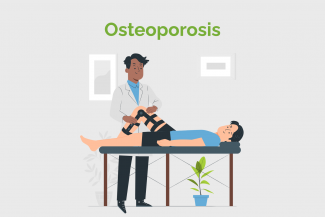Every year, osteoporosis causes about 8.9 million fractures. According to the International Osteoporosis Foundation (www.iofbonehealth.org/facts-statistics), by the year 2050 50% of all osteoporotic hip fractures will occur in Asia. This is partly due to inadequate diagnosis and treatment, even in the most high-risk patients who have already had a fracture.

You can take steps to prevent osteoporosis by making a few changes to your diet, getting enough exercise, and considering whether the available medication is right for you. Speak to your doctor about the following:
• Calcium
• Vitamin D
• Exercise. Read more about The Right Exercise for Osteoporosis
• Hormone replacement therapy
• Medication (Fosamas, Evista etc)
Screening
The National Osteoporosis Foundation (www.nos.org.uk) recommends bone mineral density testing for the following:
• Women 65 years of age and older
• Younger postmenopausal women with risk factors
• Men age 70 and older
• Men aged 50 to 69 with risk factors
Changed
28/Apr/2025
Condition









